Modern Marvels: signature, epic, anchor attractions that define eras of Imagineering; rides that mix technology, storytelling, scale, and heart in unprecedented new ways. It seems that each Disney Resort across the globe has an anchor attraction that defines it; a ride that acts as the resort’s exclusive, must-see masterpiece; a ride that may be imitated, but hasn’t been duplicated…
Indiana jones Adventure in Anaheim; The Twilight Zone Tower of Terror in Orlando; Journey to the Center of the Earth in Tokyo; Space Mountain: De la Terre a la Lune in Paris; TRON Lightcycle Power Run in Shanghai… So, if you’re keeping track, that’s almost every resort. When Hong Kong Disneyland opened in 2005, the underbuilt park didn’t have much worth going out of your way for, dooming the tiny property to remain an obscure aside globally. Until…
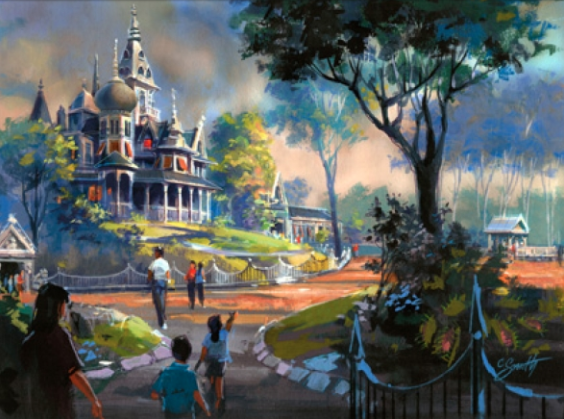
When Mystic Manor opened at Hong Kong Disneyland in May 2013, it wasn’t just the anchor the park needed; it was an Imagineering masterpiece, and a rare return to form for designers who’ve been limited by box office blockbuster properties for decades. In fact, this modern evolution of a Disneyland calssic if often ranked among the best 21st century attraction in Imagineering’s catalogue… even though relatively few of Disney’s most die-hard fans have actually ridden it!
Today, we’ll uncover the full story of Mystic Manor, dissecting the hidden history of the concept, tracing the story of its its creation, and then take a ride ourselves… so strap in, because this mysterious tale begins on the other side of the planet and decades before Mystic Manor was even a sketch on a notepad.
And before we head off, remember that you can unlock rare concept art and audio streams in this story, access over 100 Extra Features, and recieve an annual Membership card and postcard art set in the mail by supporting this clickbait-free, in-depth, ad-free theme park storytelling site for as little as $2 / month! Become a Park Lore Member to join the story! Until then, let’s start at the beginning…
Spectral start
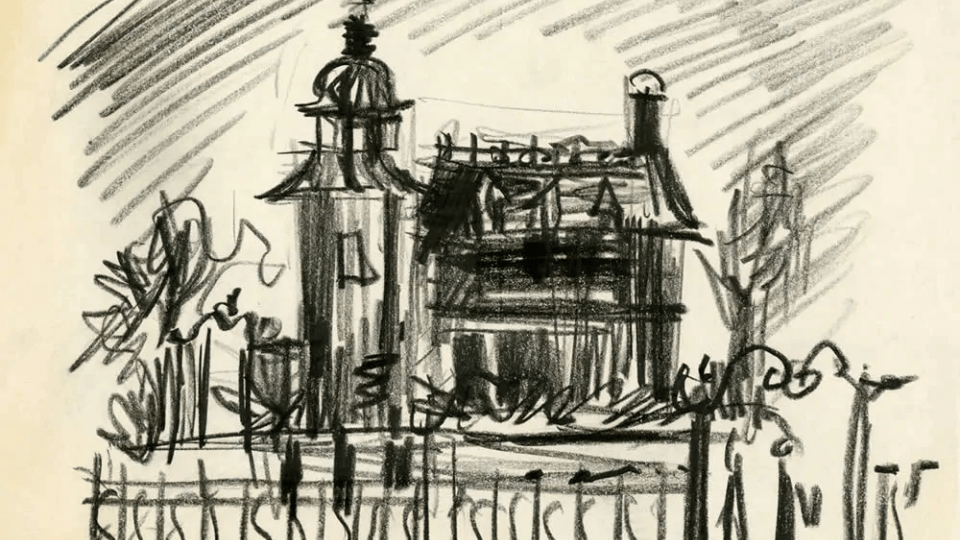
There would be no Mystic Manor if there hadn’t been a Haunted Mansion first. The stories of these two rides couldn’t be more different, but they’re intrinsically tied to one another –not in style; not in substance; but in spirit. That’s why the unusual siblingship between these two dissimilar-yet-so-familiar attractions made it into our thought-provoking list of Disney attractions with “spiritual sequels.”
So to fully understand the making of Mystic Manor, we first have to recap of the frantic creation of one of Disney’s most well loved classics.

You may already know that plans for a Haunted Mansion predated the opening of Disneyland. In the earliest initial sketches of the would-be park by Disney Legends Harper Goff and Ken Anderson, a walk-through haunted house was present. At first, it was in a ramshackle Midwestern home on a hillside meant to accessed via a graveyard off Main Street, U.S.A. But Walt – who had a lot to prove in his new kind of “amusement park” – didn’t like the idea of a broken down old building in his park.
By the 1960s, the idea of incorporating a haunted house into Disneyland had gained traction, albeit in a very different physical form: a haunted home on the outskirts of Frontierland in the New Orleans Square expansion designers were crafting.
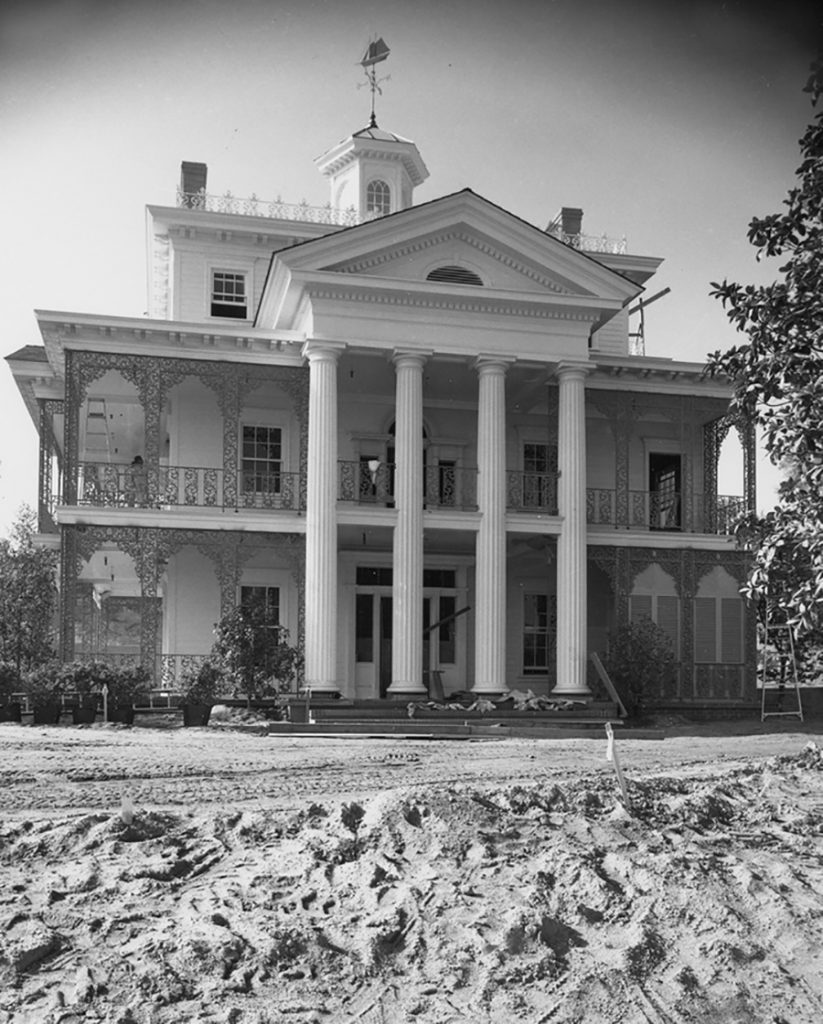
Though the stately Antebellum manor itself materialized along Disneyland’s Rivers of America in 1963, its gates didn’t open that year. That’s because Walt and the team had been called away to the 1964 – 65 New York World’s Fair to build headlining attractions for the State of Illinois, General Electric, Pepsi-Cola, and Ford Motors.
So 1963 came and went without the mansion’s doors opening. Despite its stately exterior, the manor was empty. So did 1964. And 1965. In fact, designers were still working out exactly what should happen inside…
Museum, Mausoleum, or Musical?
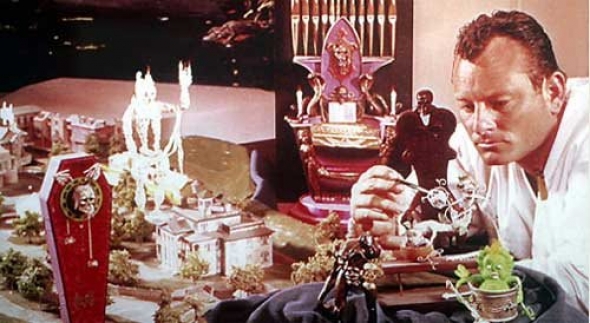
Walt seen a few plans cooked up for the haunted house designed by Disney Legend Rolly Crump. His “Museum of the Weird” concept would’ve seen guests walk through unusual galleries of illusions, inexplicable wonders, and theatrical tricks. Some of Rolly’s concepts did stick and eventually make it into the final Mansion, like a séance chamber, coffin clocks, a disappearing organist brought to life through the 19th century Pepper’s Ghost illusion, and gypsy wagons.
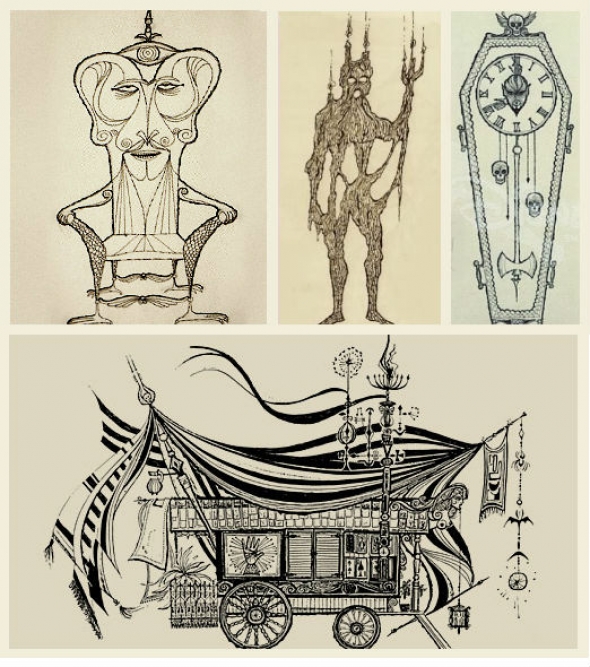
But Rolly Crump’s Museum of the Weird was also decidedly more ethereal, with otherworldly candle men made of wax, encounters with tikis and totems, a chair that would spring to life and interact with guests, mirrors with faces, and man-eating plants. The mind-bending tour would’ve seen guests encounter unusual finds from around the globe, made all the weirder by their disconnectedness.
Ultimately, Walt liked the idea of the “Museum of the Weird” and suggested it might make a wonderful restaurant connected to the mansion, somewhat like the Blue Bayou’s relationship with the nearby Pirates of the Caribbean.
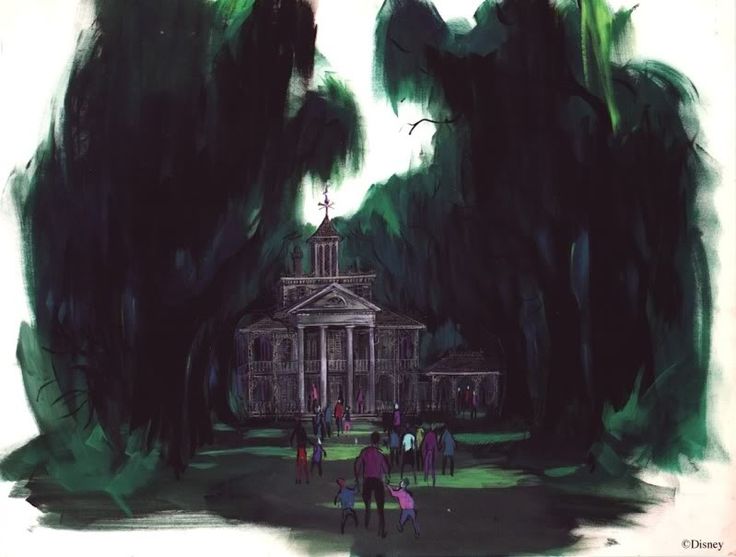
But then in December 1966, Walt died unexpectedly of lung cancer. When Walt died, so too did any consideration for the vacant plantation house in New Orleans Square housing a Museum of the Weird.
Across the company, projects stalled. The team Walt had left behind didn’t know how (or even if) they should proceed on Walt’s pet projects without him. So as 1967 dawned, the beautiful white plantation house still sat empty. And worse, Walt had never decided what exactly he expected to go inside of it…
The Haunted Mansion
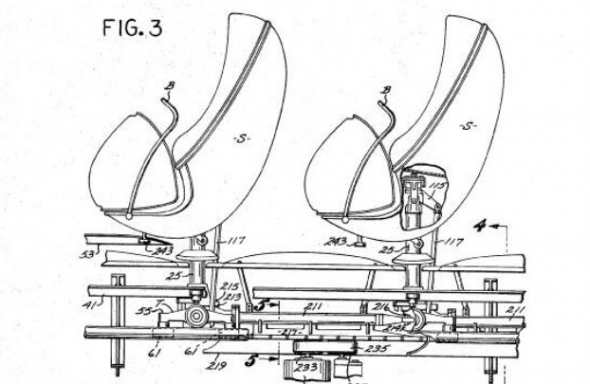
Designers famously considered a number of ideas to inhabit the Haunted Mansion, including a guided walkthrough and a more traditional spook house, toying with different backstories, narratives, and effects to guide guests from room to room. But ultimately, the Haunted Mansion’s skeleton arrived via a cutting edge ride system. The Omnimover debuted alongside the Lost Legend: Adventure Thru Inner Space – an anchor attraction in Walt’s New Tomorrowland of 1967.

Ranking among our Seven Modern Wonders of the Theme Park World, the Omnimover has a super power… Its chain of connected cabs moves continuously at a constant speed throughout the ride, with each cab’s direction controlled by a rail. In that way, the Omnimover gives Imagineers the real-life power of a movie camera, orienting guests’ attention in whichever direction they need.
With a high-capacity and creatively powerful ride system selected, the Haunted Mansion just needed a worthwhile story. Or did it? Ultimately, the infamous story of the Haunted Mansion came down to two opposing viewpoints.
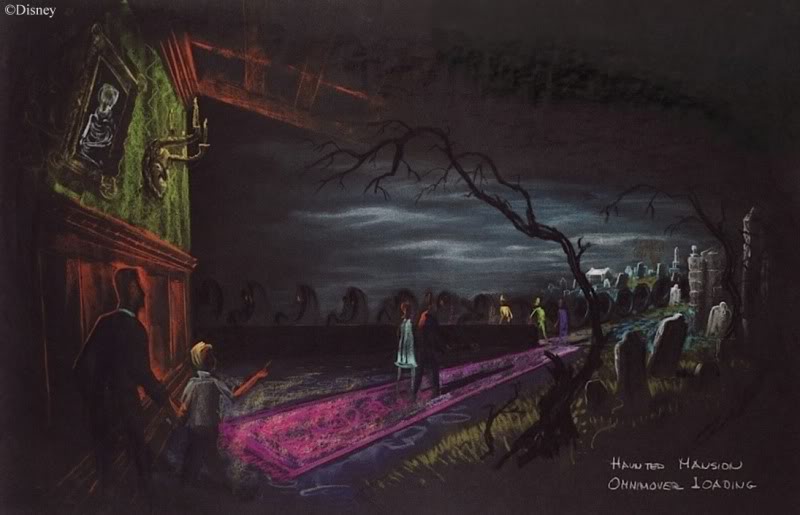
The legendary Claude Coats (background animator, mentor to Tony Baxter, and designer of Pirates of the Caribbean, Adventure Thru Inner Space, and Lost Legends: Mr. Toad’s Wild Ride, 20,000 Leagues Under the Sea, World of Motion, and Horizons) believed the Haunted Mansion should be an atmospheric, spooky tour past endless hallways, cryptic vignettes, and frightening, characterless environments – “scary sights and sounds,” epitomized by the famous “Limbo” boarding area, drawn by Coats above.
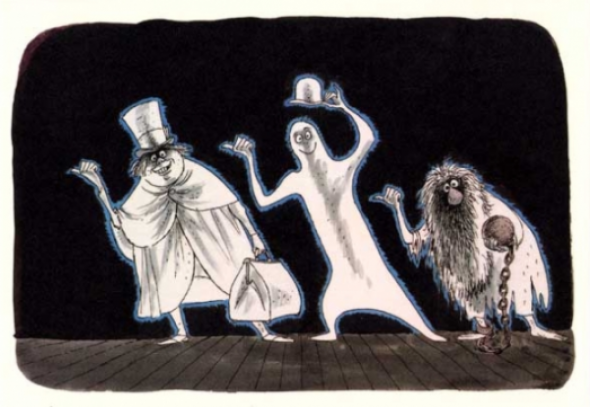
His counterpart, Marc Davis (designer on the Jungle Cruise, The Enchanted Tiki Room, “it’s a small world,” The Carousel of Progress, and Country Bear Jamboree) instead believed that this Haunted Mansion should be a “frightfully funny” tour packed with whimsical ghost characters, zany dark ride gags, and songs – much more his style given the musical, character-filled projects in his portfolio.
And without Walt to cast the tie-breaking ballot, it came to X Atencio (who wrote the script for Adventure Thru Inner Space, Pirates of the Caribbean, and the Haunted Mansion, as well as the theme songs for the latter two, “Yo-Ho (A Pirate’s Life for Me)” and “Grim Grinning Ghosts”) to settle the score by merging the concepts together to create the perfect mix…
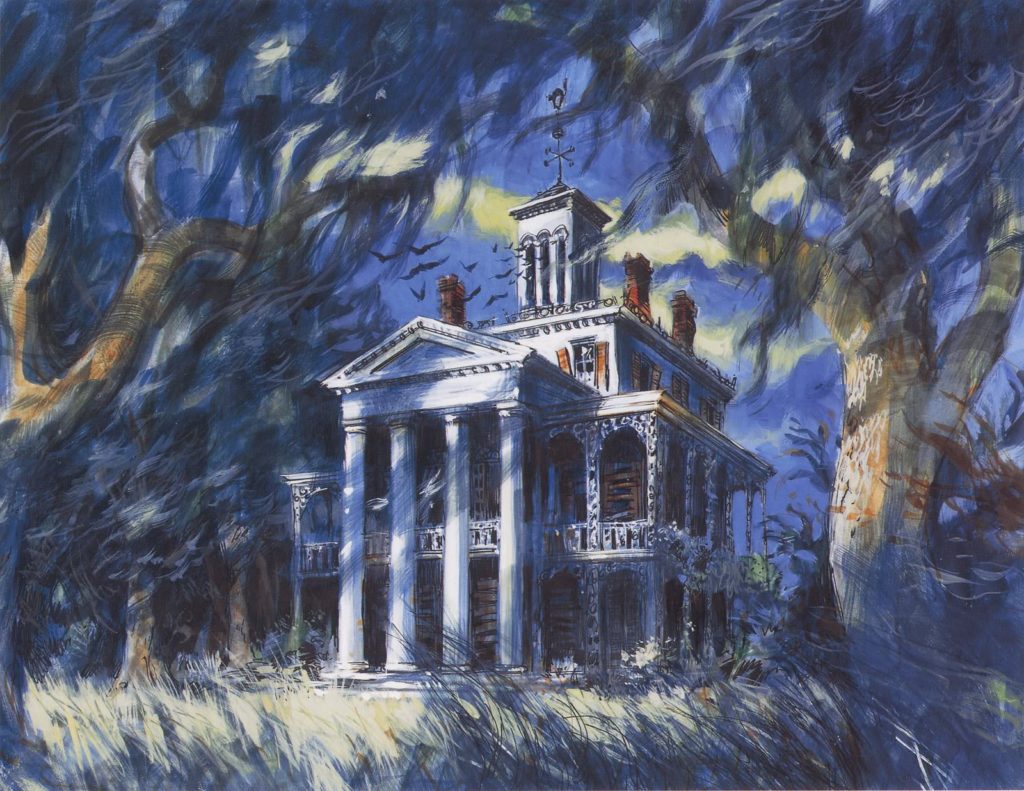
Hauntings Spread
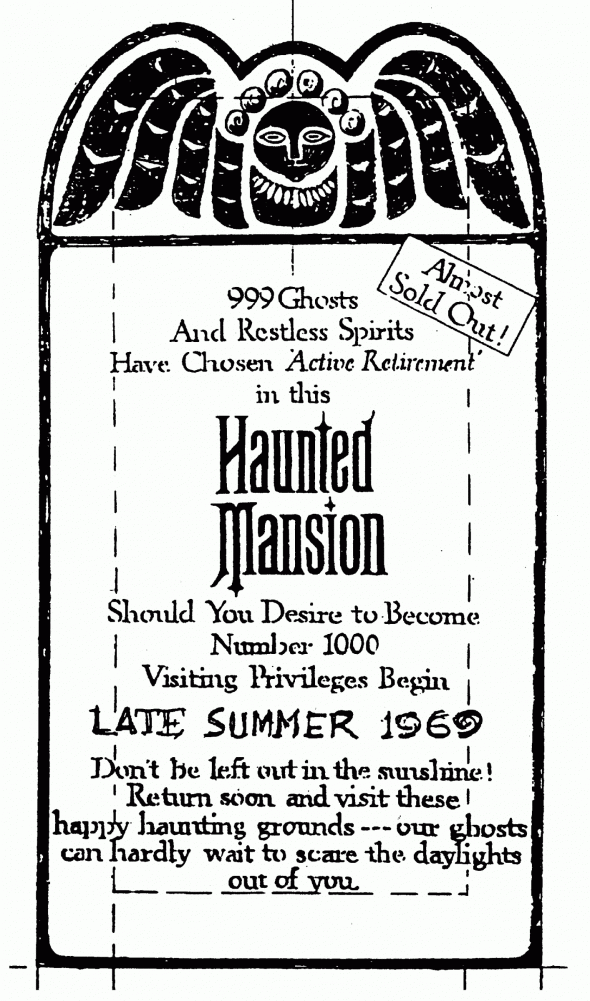
The Haunted Mansion finally opened in 1969 – six years after the mansion itself had been built. Inside, an atmospheric, unsettling, prologue of haunting vignettes that gradually grows into a sing-along spook-filled finale. The final Haunted Mansion – the one we know and love today – balanced it all, using the cutting edge Omnimover ride system as a character in and of itself – the “Doom Buggy.”
Of course, the ride was instantly recognizable as a shining beacon of Disney’s design and storytelling, and that made its inclusion any future Disney Parks all-but-assured.
So when Magic Kingdom opened in 1971, it, too, featured a Haunted Mansion that had expanded slightly upon Disneyland’s, albeit within a new context…

Walt Disney World designers had supposed that the real New Orleans was simply too close to Florida to make it “exotic” or “romantic” for locals, so they axed New Orleans Square in favor of a historic 1700s colonial harbor called Liberty Square. Fittingly, the mansion was redesigned as a redbrick Gothic revival manor overlooking the Rivers of America.
When Tokyo Disneyland opened in 1983, its Haunted Mansion was virtually identical to Magic Kingdom’s, except that the cultural shift saw the creaky colonial manor placed in Fantasyland with a few more “fanciful” embellishments to make it feel at home there.
Less than a decade later, a fourth Disneyland-style park opened in France. However, Disneyland Paris represented the most radical departure yet. There, the ride was embedded into the extravagant and dramatic romance of Frontierland and given a new backstory tied together with Big Thunder Mountain and all of the land’s rides, restaurants, shops, and attractions to form one overarching continuity.
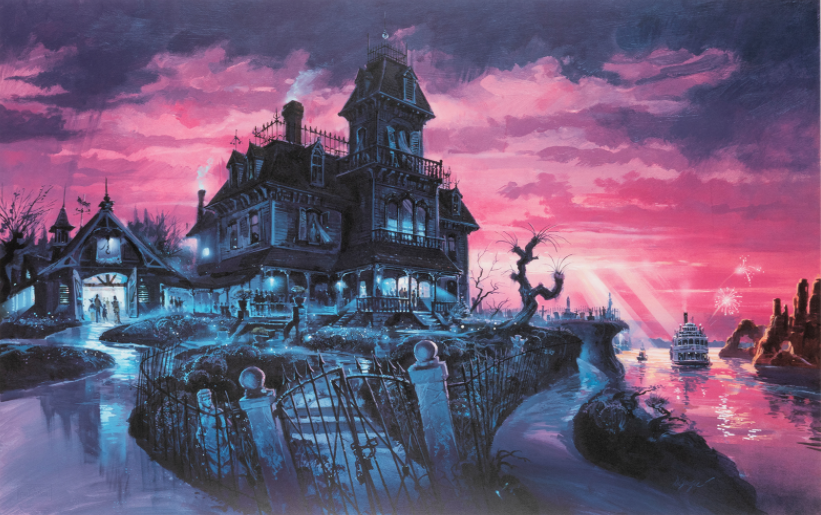
So astoundingly unique is this one-of-a-kind ride, it earned its own in-depth entry, Modern Marvels: Phantom Manor that’s well worth a read for Disney Parks fans the world over.
Put simply, the Haunted Mansion became a staple of a visit to a Disney park. Some parents track their child’s growth with a height-measuring notch carved in a doorframe; others take an annual photo in front of a landmark. But for the Disney crowd, a child’s maturity is most dutifully measured by his or her willingness to confront the “terrors” that await inside the ghostly manors at Disney Parks across the globe.
In 2005, Disney opened its first ever Disneyland-style park to not feature a Haunted mansion. In fact, Hong Kong Disneyland didn’t have a lot of what you’d expect from a Disney Park. At least, not yet… Read on as we blaze our trail toward the misty jungles of Mystic Point…


